The graph showing the dependence of intensity of transmitted light on the angle between polariser and analyser is
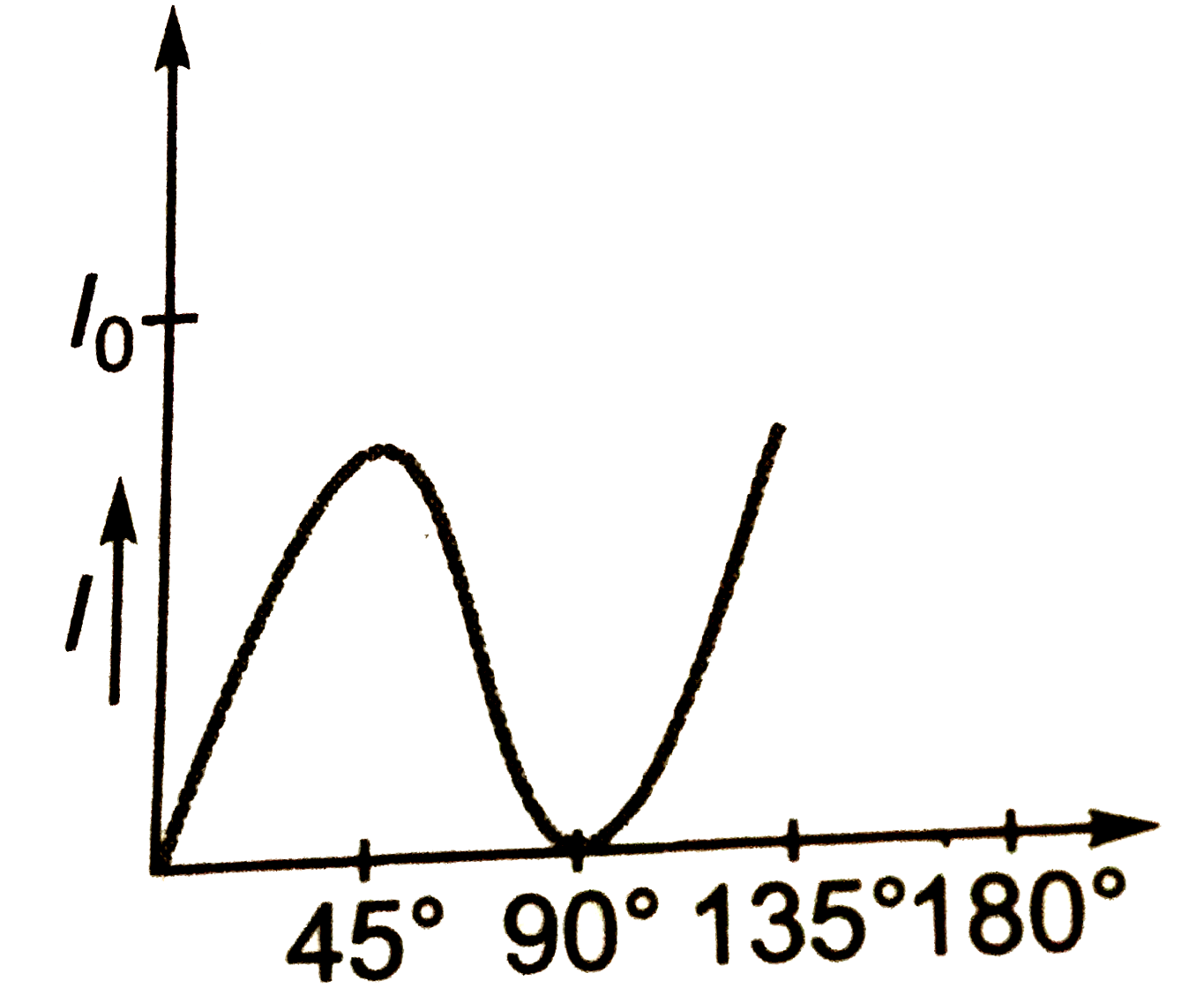
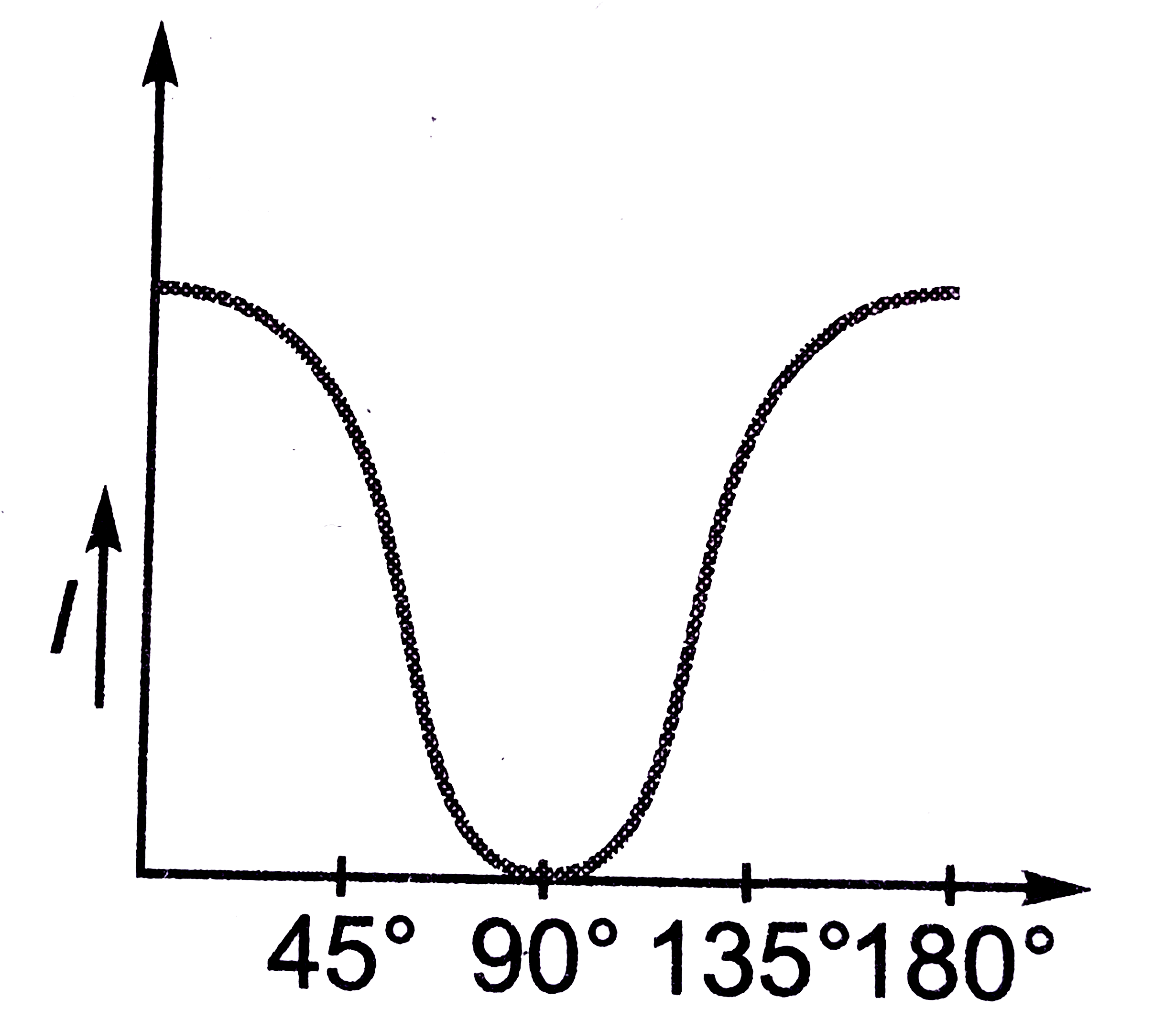
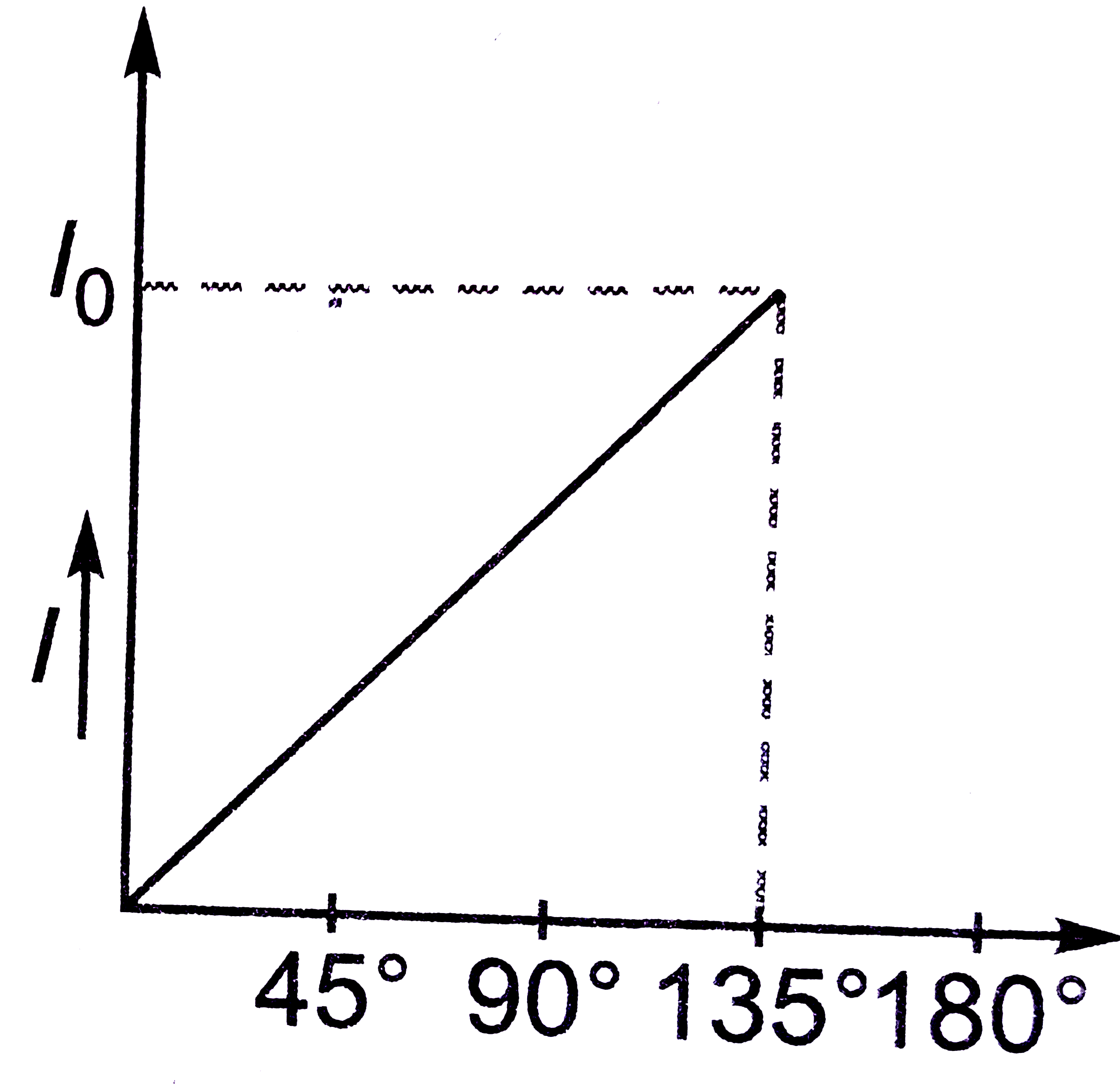

The correct Answer is:B
According to law of Malus, when a beam of completely plane polarised light is incident on an analyser, the resultant intensity of light (l) transmitted from the analyser varies diretly as the square of the cosine of the angle (θ) between planes of transmission of analyser and polariser.

Where, l0 = intensity of the light from polariser.
From Eq. (i), we note that if the transmission axes of polariser and analyser are parallel (i.e.θ=00or180∘) then l=l0. It means that intensity of transmitted light is maximum. When the tranmission axes of polariser and analyser are perpendicular (i.e.θ=90∘), then l=l0cos2900=0. It means the intensity of transmitted light is minimum.
On plotting a graph between l and θ as given by relation
(i), we get the curve as shown in figure.
Topper's Solved these Questions
- WAVE THEORY OF LIGHT BOOK - MHTCET PREVIOUS YEAR PAPERS AND PRACTICE PAPERSCHAPTER - WAVE THEORY OF LIGHT EXERCISE - EXERCISE 2 (Miscellaneous Problems)
18 Videos
- WAVE THEORY OF LIGHT BOOK - MHTCET PREVIOUS YEAR PAPERS AND PRACTICE PAPERSCHAPTER - WAVE THEORY OF LIGHT EXERCISE - MHT CET CORNER
4 Videos
- WAVE THEORY OF LIGHT BOOK - MHTCET PREVIOUS YEAR PAPERS AND PRACTICE PAPERSCHAPTER - WAVE THEORY OF LIGHT EXERCISE - MHT CET CORNER
4 Videos
- WAVE MOTIONBOOK - MHTCET PREVIOUS YEAR PAPERS AND PRACTICE PAPERSCHAPTER - WAVE MOTIONEXERCISE - MHT CET CORNER
23 Videos
Similar Questions
Name one device for producing polarized light. Draw a graph showing the dependence of intensity of transmitted light on the angle between polarizer and analyser.
View SolutionDraw a graph that shows the dependence of intensity of transmitted light on the angie between Polariser and analyser.
View Solution
Knowledge Check
The graph showing the dependence of intensity transmitted light on the angle between polariser are analyser, is
A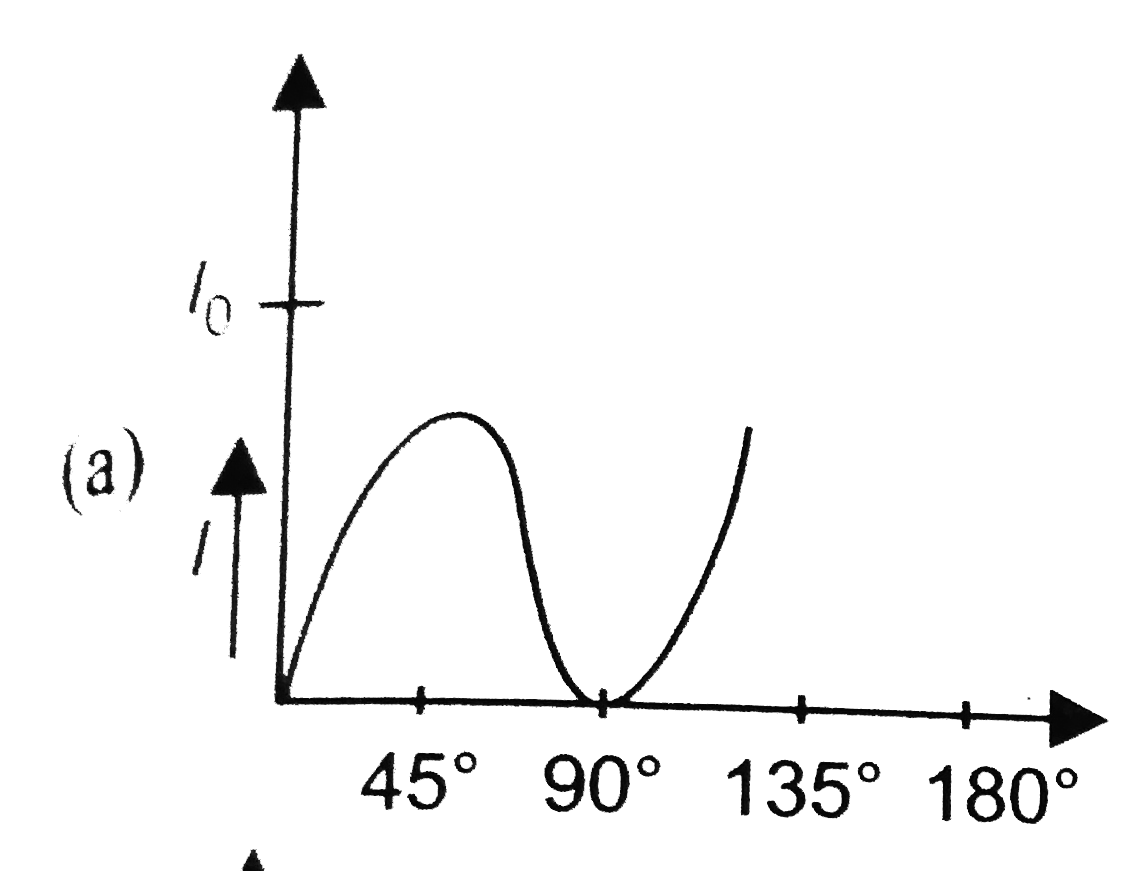 B
B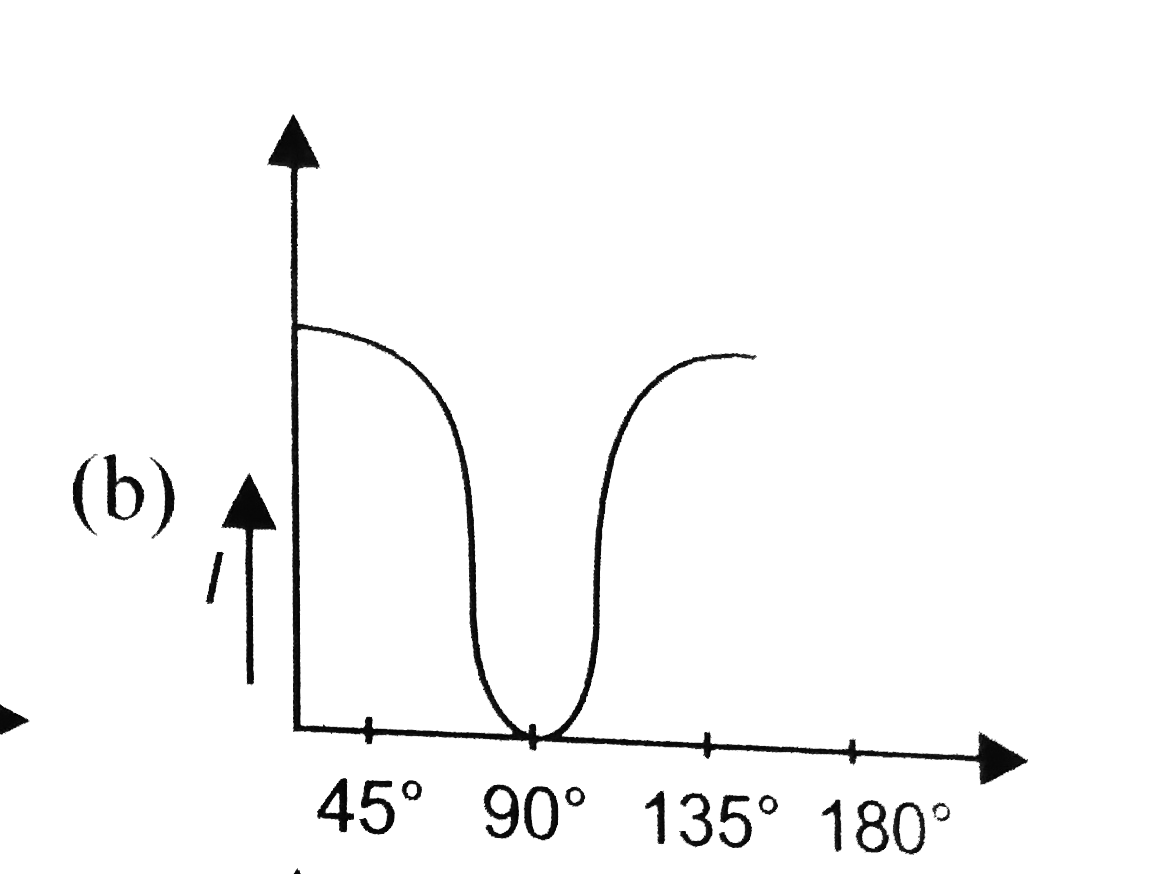 C
C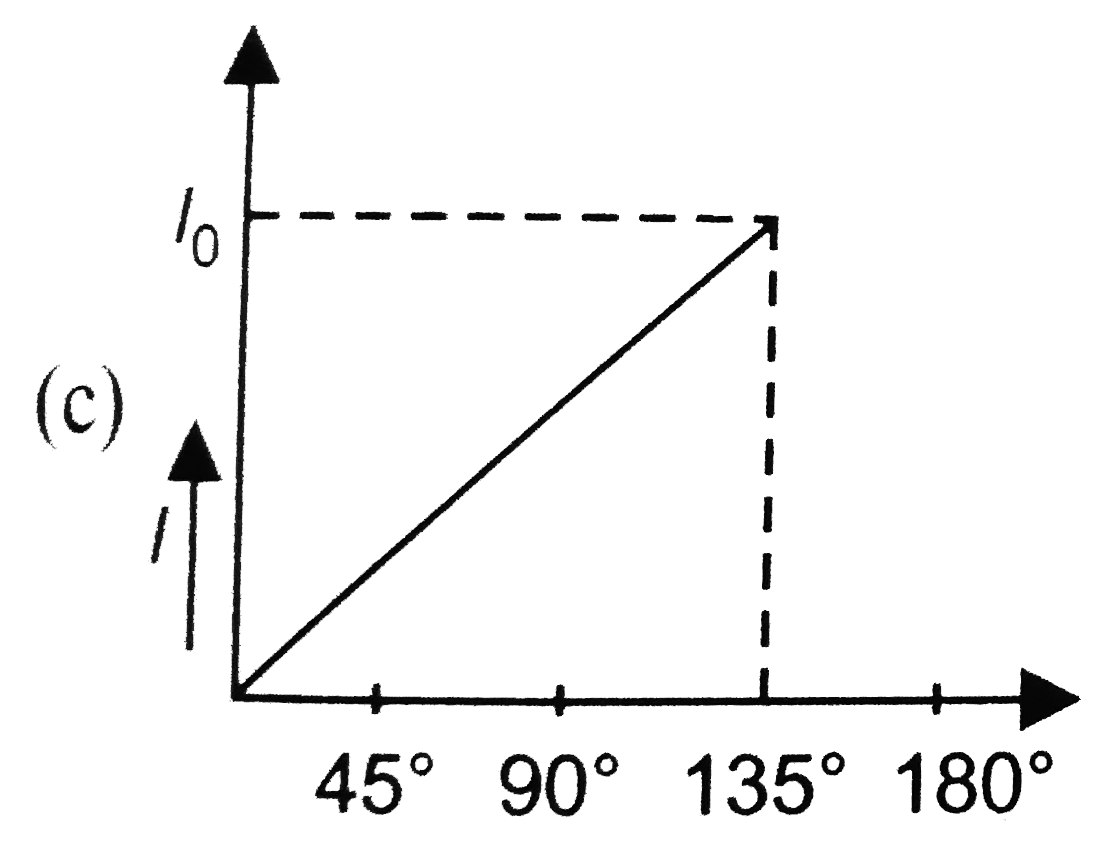 D
D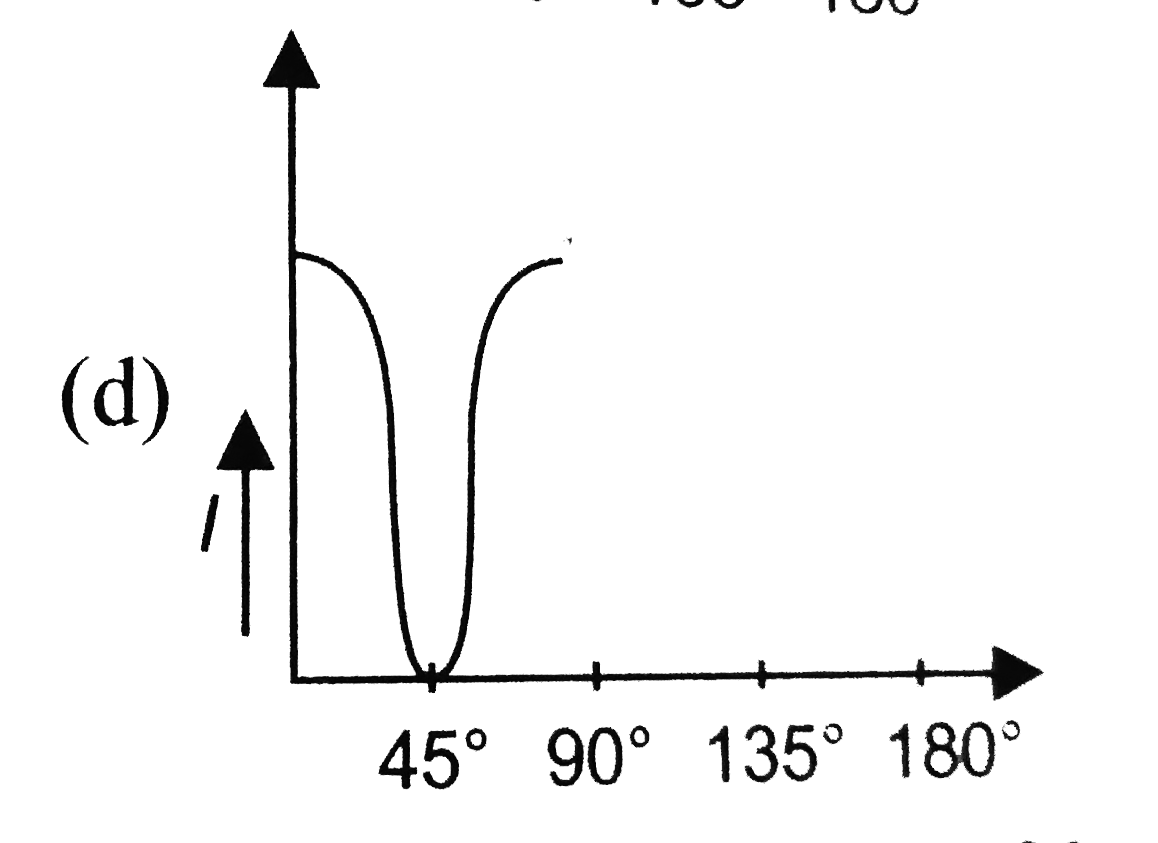
Draw the graph showing the variation of intensity of polarised light transmitted by an analyser.
View Solution(a) State law of Malus.
(b) Draw a graph showing the variation of intensity (I) of polarised light transmitted by an analyser with angle (θ) between polariser and analyser.
(c) What is the value of refractive index of a medium of polarising angle 60∘ ?
View Solution(i) State law of Malus.
(ii) Draw a graph showing the variation of intensity (I) of polarised light transmitted by an analyser with angle (θ) between polariser and analyser.
(iii) What is the value of refractive index of a medium of polarising angle 60∘ ?
View Solution(a) When an unpolarised light of intensity I0 is passed through a polaroid, what is the intensity of the linearly polarised light ? Does it depend on the orientation of the polaroid ? Explain your answer.
(b) A plane polarised beam of light is passed through a polaroid. show graphically the variation of the intensity of the transmitted light with angle of rotation of the polaroid in complete one rotation.
View SolutionWhat is plane polarised light ? Two polaroids are placed at 90∘ to each other and the transmitted intensity is zero. What happens when one more polaroid is placed between these two, bisecting the angle between them ? How will the intensity of transmitted light vary on further rotating the third polaroid ?
(b) If a light beam shows no intensity variation when transmitted through a polaroid, which is rotated, does it mean that the light is unpolarised ? Explain briefly.
View SolutionFind an expression for intensity of transmitted light when a polaroid sheet is rotated between I polaroids. In which position of the polaroid sheet will the transmitted intensity be maximum ?
View SolutionWhat is is plane polarised light ? Two polaroids are placed at 90∘ to each other and the transmitted intensity is zero. What happens when one more polaroid is placed between these two, bisecting the angle betweeen them ? How will the intensity of transmitted light vary on further rotating the third polaroid ?
(b) If a light beam shows no intensity variation when trasmitted through a polaroid which is rotated, does it mean that the light is un-polarised ? Explain briefly.
View Solution
